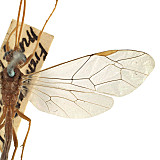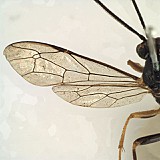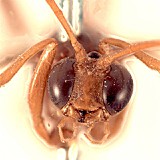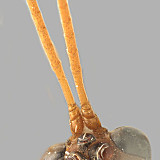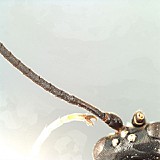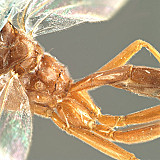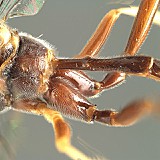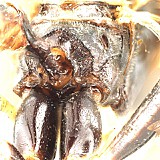Megaceria Szépligeti, 1908
There are only three valid species, known only from Australia:
Megaceria opheltes Szepligeti, 1908
Megaceria pagana (Morley, 1913)
Megaceria rufiventris (Brulle, 1846)
Denticeria and Megaceria were the only two Australian genera placed in Euryproctini by Gauld (1984). Gauld (1984) clearly differentiated these two from other Australian Ctenopelmatinae, but did not differentiate them from other, non-Australian Euryproctini. The distinctive distal broadening of the first subdiscal cell of the fore wing and the exceptionally short first abscissa of CU1 in the hind wing (as in Fig. 1) characterize these two genera relative to other euryproctine genera as treated in the key by Townes (1970). Denticeria has a shorter, broader T1 than does Megaceria, and the laterotergites are not separated by a crease on T3 in Megaceria.
Members of the rufiventris group closely resemble those westwoodiines without a distinct glymma, especially Pergaphaga (because of the reduced propodeal sculpture relative to Dicytopheltes, the other westwoodine without a distinct glymma). Megaceria is most easily separated from westwoodiines, including Pergaphaga, by the relatively longer first flagellomere lacking tyloids and by the hind wing venation.
The above description is extensively modified from Gauld (1984) and is based on numerous specimens borrowed from museums indicated in the acknowledgements. The description of Megaceria by Townes (1970) actually refers to Pergaphaga Gauld, 1984. Townes (1970) based his description on a misidentified specimen that Gauld (1984) subsequently recognized as an undescribed genus. Short (1978) similarly misidentified Megaceria and thus his description of the larva pertains to Pergaphaga.
There are no specimens currently determined for this OTU, or those specimens determined for this OTU are not yet mappable.
This work would not have been possible without the groundwork provided by Ian Gauld’s study of the Australian and Costa Rican faunas, and we are particularly grateful for his assistance in many aspects of this study. We also thank the following curators and researchers for extended loans of the material used for this study: David Wahl of the American Entomological Institute, John LaSalle of the Australian National Insect Collection, Andy Bennett of the Canadian National Collection, Ian Gauld and Gavin Broad of The Natural History Museum, London, Ken Walker of the National Museum of Victoria (Australia), Chris Burwell of the Queensland Museum, Australia, and Bob Kula of the US National Museum of Natural History. We also thank David Wahl for useful feedback throughout our study. Matt Yoder provided considerable assistance with databasing issues, and our use of PURLs (http://purl.oclc.org) in this regard follows the example of their use in publications by Norm Johnson. Heather Cummins, Mika Cameron, Patricia Mullins, Caitlin Nessner, Danielle Restuccia, and Cheryl Hyde graciously assisted us with image processing, formatting, and literature retrieval. This study was supported by the National Science Foundation’s PEET program under Grant No. DEB 0328922 and associated REU supplement nos DEB 0522836, 0616851, 0723663, and 0923134.
This material is based upon work at Texas A&M University supported by the National Science Foundation under Grant Number DEB 0328922 with REU supplements DEB 0522836, 0616851, 0723663, and 0923134. Any opinions, findings, and conclusions or recommendations expressed in this material are those of the author(s) and do not necessarily reflect the views of the National Science Foundation.

